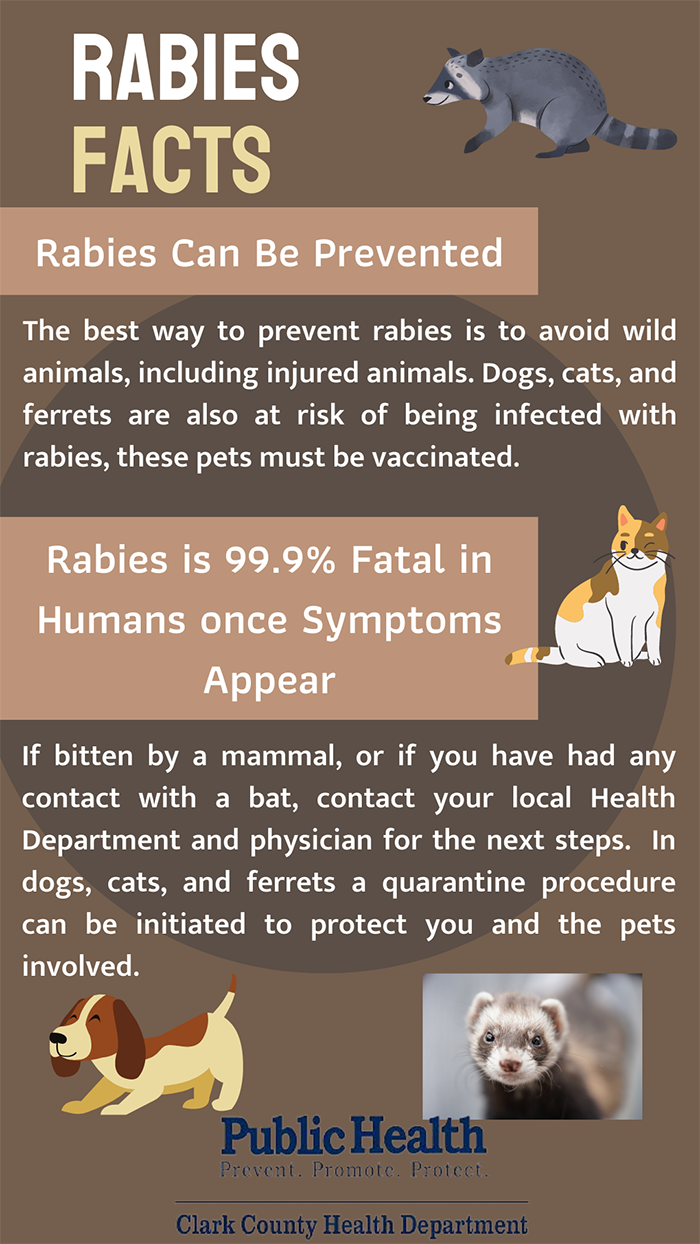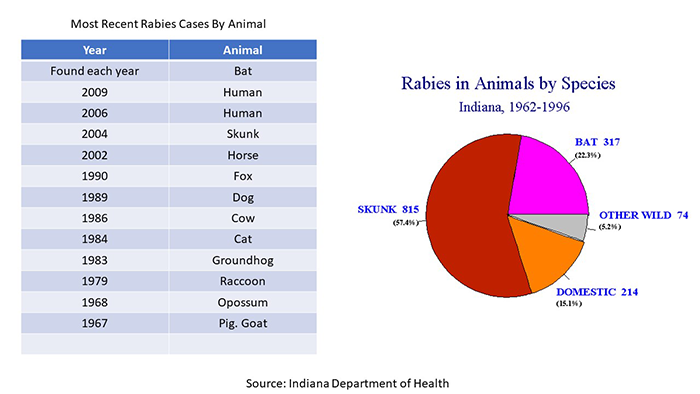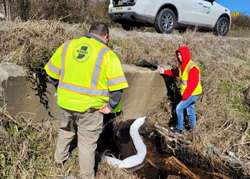Please email your completed form to This email address is being protected from spambots. You need JavaScript enabled to view it. or fax to 812-288-2711 or you can drop off your completed form to the Health Dept office.
Click here to complete an official Indiana Animal Bite Form
Animal bites can cause serious injury and infection, including rabies. Rabies is deadly in humans. All animal bites and exposures to bats should be reported to the Clark County Health Department.
Although rabies is rare in Indiana, it has not been completely eradicated. Indiana law requires all dogs, cats, and ferrets 3 months of age and older be vaccinated against rabies. To be recognized as valid, the vaccination must be administered by a licensed and accredited veterinarian.
Indiana animals considered to be at highest risk of transmitting rabies to humans include bats, skunks, foxes, raccoons, and coyotes. Dogs and cats can also transmit rabies that they have acquired from wildlife, but pets are rarely found rabid in Indiana. Reptiles and birds never get rabies. Theoretically, rats, mice, rabbits, squirrels, chipmunks, etc. can transmit rabies, but bites from these animals are not considered a rabies risk in Indiana at this time. Your local health department can help you evaluate the risk of rabies following an animal bite.

Rabies Frequently Asked Questions
Q: How do you treat an animal bite?
- A: Wounds should be washed and flushed immediately with soap and water for 10–15 minutes. If soap is not available, flush with water alone. This is the most effective first-aid treatment against rabies.
- A: Wounds should be cleaned thoroughly with 70% alcohol/ethanol or povidone-iodine, if available.
- A: As soon as possible, take the person to a healthcare facility for further treatment.
Q: How long does it take for dogs and cats to develop rabies, and how long does a rabid animal survive?
A: The incubation period ranges from a few days to several months, whereas the duration of illness – until death – varies from 1 to 7 days.
Q: How long after exposure do symptoms begin?
A: It may take weeks or months to get sick after exposure. This can vary depending upon the location of the bite, type of rabies virus, and any existing rabies immunity.
Q: What are the symptoms of rabies infection?
A: Early symptoms of rabies infection include fever, headaches, weakness, and discomfort, as well as a prickling or itching sensation at the site of the bite. Later symptoms include agitation, anxiety, insomnia, confusion, delirium, hallucinations, hydrophobia (fear of water), difficulty swallowing, drooling, partial paralysis, and eventual death.
Q: How is rabies spread?
A: The rabies virus is found in the saliva of infected animals. The virus is spread through a bite or scratch from an infected animal.

Keep bats out of your home:
Bats, mice, and other critters can fit through very small cracks, so sealing up gaps and cracks in your home is important.
Attics are often a favorite space for bats. There may be droppings where the bats have been living, and their entrance hole will likely not be far away.
Before entering an attic, be sure to cover yourself with protective clothing including an N95 mask. Bat or other animal droppings can carry disease, and many types of insulation can be unhealthy for your lungs and skin. Bring a flashlight into the attic. Move around the attic, turning the flashlight off to look for daylight coming in, which is where critters may be entering.
Bats or mice can also enter a home through the basement or crawl space. Once they get in, they can sometimes climb inside a wall from the basement or crawlspace up to the attic or into the house, so don't ignore gaps or cracks anywhere. Search other parts of your house as well. If you can see daylight through a crack, creatures can likely come inside.
Many stores sell cans of foam or tubes of caulk intended for sealing up cracks. Read all product labels, and follow instructions for safety and application instructions. It is best to seal small cracks at the inside surfaces of the house, which helps prevent interior humidity from escaping into your building structure and condensing, which feeds mold and mildew. To reach small cracks, tape a disposable drinking straw to the end of the straw that comes with the can of spray foam. Squeeze the drinking straw flat to reach small cracks. Let the foam harden and then scrape off or cut back any excess foam.
Large gaps in the outside of the house can be covered with metal flashing, which should be tucked under the siding or trim above. This allows water to shed off the house and humidity to escape the structure, while keeping critters out of your home.
Pest control companies are also available if the issue seems too big to handle on your own, or if these do-it-yourself methods are not effective. -HD of Washtenaw County Michigan
What to do if you have a bat in your home
https://www.humanesociety.org/resources/theres-bat-my-house
More information
Indiana Rabies page https://www.in.gov/rabies/












